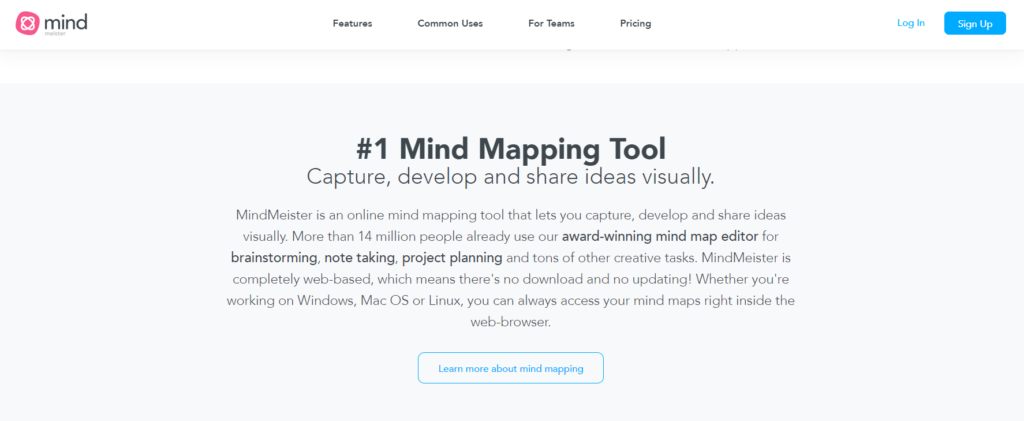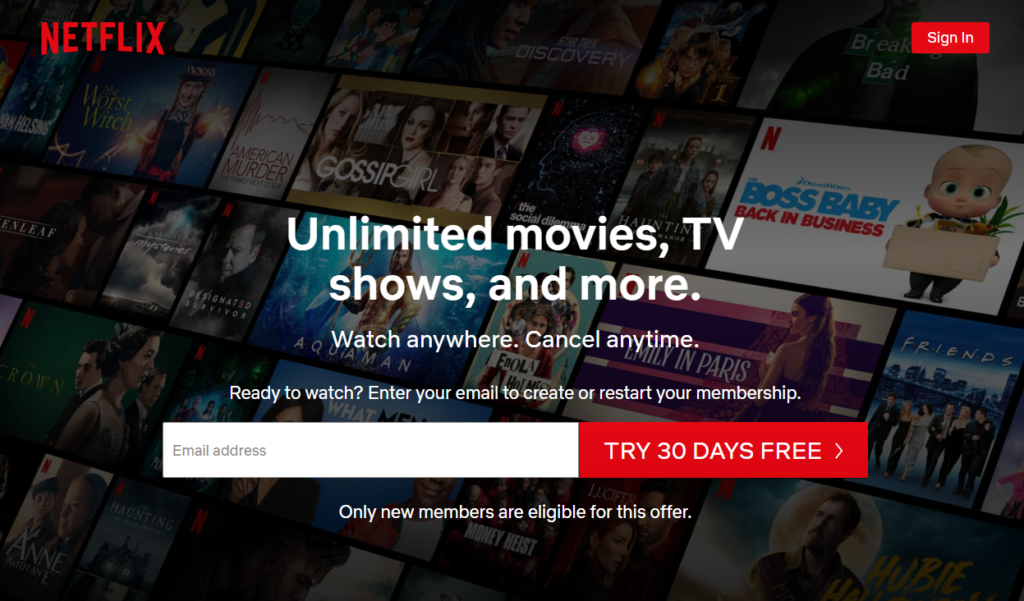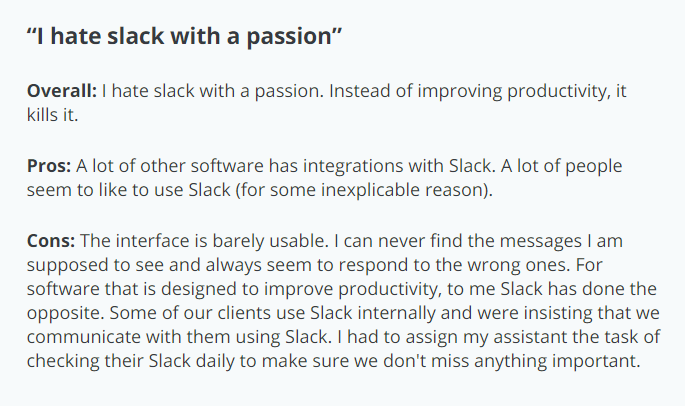
Reaching the right customers, clients, and leads can often be a complex process. However, it’s worthwhile taking the time and effort to make sure you’re getting it right. There are many factors that determine who you should be targeting, both related to the customer and your business. Two elements worth considering in detail are your unique selling proposition/point (USP) and customer pain points. To give you a head start, we’ve taken a look at everything you need to know about both of these factors.
What is your USP?
A USP is your business’ unique selling proposition (or point). It’s the ‘x-factor’ that makes your business stand out from the others in your market. With a strong USP, you can make sure that customers choose you instead of competitors, helping you retain clients and reduce customer turnover.
Of course, this USP can be easier to find for some businesses than others. If you’re the only company in a particular niche or area, for example, you have your USP pre-made. Lead generation becomes far easier as you’re a recognized name offering a unique service. However, for most businesses, things aren’t this easy, which can make determining your USP somewhat more difficult.
Why do you need a USP?
There are many reasons why you need a USP for your business. No matter what industry or market you operate in, you need to be able to mark your company as different from the others. But this isn’t the only benefit that comes with a USP, as we’ve outlined below:
- It helps with customer recognition. When customers are presented with a choice, they usually go with the familiar. Your unique selling proposition can help you to stick in peoples’ minds, which can make your lead generation and sales efforts more successful.
- It helps develop your brand. A USP gives you the opportunity to develop a business identity. By making the core of your company a unique attribute, you can build a brand around it, again reinforcing your position in the market.
- It helps you create consistent messaging. When it comes to sales and advertising, a USP gives you the chance to develop a marketing strategy. The consistency that comes across marketing channels helps with all of the points mentioned above.
So, evidently, identifying and capitalizing on your company’s USP can be hugely beneficial. But how do you go about determining yours?
Steps To Determine Your Unique Selling Point

Although the exact process for highlighting a USP is different for every business, there are some consistent steps you can take to make things as straightforward as possible. Below, we’ve outlined the process that can help you identify yours:
Ask questions
Start by asking some questions about your business and your customers. You’ll need to answer these before you’re able to truly identify what it is that makes you unique. Try things like:
- Who is your audience?
- What do you do?
- How do you help customers overcome problems?
- Why should the customer choose you?
- How do you want your customers to perceive you?
List features
Next, take some time to think about the features of your business, approach, products, and services. You can search for some of these features and compare them to competitors to highlight similarities and differences.
Identify emotions
Customers and clients often make a purchase based on emotion. You should consider the emotional needs of your target customers, as well as how your business can meet them. This really helps with things like connecting with people and building a relationship.
Choose your language
Once you’ve got an idea about the three points above, you can start to come up with some words and messaging that identify your USP. These should resonate with your customers and briefly sum up what your company is all about.
Solve a problem
Customers want to know what’s in it for them. Your ultimate goal is to have a USP that solves a problem for people. How can you provide a solution in a way that no other business can?
Things to avoid when identifying your USP
The steps listed above can help you start to get a feel for your unique selling proposition. However, there are pitfalls that companies often fall into when trying to identify their own. Here are some things to avoid when you’re creating your USP:
- Don’t be vague. Your USP should be a concrete factor. Try and avoid vague and meaningless language when you’re trying to identify yours. It doesn’t help you, and it can fail to hit the mark with your clients or customers.
- Don’t be too broad. You can’t be all things to all people. You want to ensure that your unique selling point resonates with your target audience, and a broad appeal isn’t going to do that.
- Don’t overcomplicate it. Concise and snappy language is always preferable here. You don’t want to confuse your potential customers with a USP that’s overly complex.
Testing and refining your USP

So, once you’ve got an idea of what your USP is, how do you make sure it’s the right one? In reality, defining your unique selling proposition is an ongoing process of refinement. It’s unlikely that you’re going to get it right the first time. Here are some factors to consider when testing and refining your message:
- Is it unique? You’ll want to compare your efforts to competitors in your field. The whole point of a USP is that it differentiates you from the crowd. Competitor research is a good way of doing this.
- Does it provide a benefit? Your customers/clients should be at the heart of what makes you unique. Is your USP giving them a benefit that they can’t get elsewhere?
- What is the response like? When you’re using your USP in marketing and advertising efforts, you should be able to assess how effective it is. As well as using analytics to determine performance, you can also canvas opinions from your existing customers and clients.
It often takes a while to come up with a solution that’s going to work as effectively as possible. This process of refining and testing should be part of your overall process.
Communicating your USP
Once you’ve got a unique selling proposition identified, you need to be able to show your customers what you’re all about. There are numerous ways you can do so, though you want to make sure you’re consistent across the board.
You can start with a marketing tagline that you can use across your marketing channels. Something short and sharp can be memorable and convey a whole host of information. Think about Dominos Pizza, for example, ‘Pizza delivered in 30 minutes, or it’s free.’ That conveys a unique benefit that solves a problem.
This messaging should be consistent across all of your marketing efforts. A more detailed email campaign that highlights your benefits and USP can be effective, for example. Similarly, a header bar on your website can quickly and concisely outline everything your customers need to know.
Communicating your USP is all about having a clear message that’s easy to understand. You can then apply this across things like your website, promotional materials, and even your LinkedIn InMail.
Best examples of brands communicating their USP effectively

If you’re looking for some examples of brands with a successful USP, we’ve highlighted some below. Each of these has a strong and clear message of why they stand out:
- Slack. The straightforward ‘where work happens’ slogan sets the collaboration tool Slack apart from its competitors. This is further seen by their ‘Integrate with the services you already use’ mantra.
- Mint. Mint uses the tagline ‘it’s all coming together’ for their all-in-once finances tool. They bring all your money into one place, and their messaging is consistent.
- Google Drive. With this service, Google promise ‘easy and secure access to all of your content.’ With a few words, the tech giants sum up everything you need to know.
- Dropbox. As with the above example, Dropbox uses a concise and short USP that grabs the attention – ‘focus on work that matters.’
- Optimizely. The consistent and concise messaging from Optimizely promises customers ‘extraordinary experiences through experimentation’.
Customer Pain Points
One of the key features related to finding and developing your USP is customer or business pain points. As we’ve established, one of the main ways you can stand out from the crowd is to solve a problem. However, knowing the right problem and how to solve it can be difficult.
Without understanding what the problems customers have, you can’t come up with an effective solution. To help you understand customer pain points in more detail, we’ve outline some of the key details.
What are customer pain points?
To put it simply, pain points are the specific problems that customers of your business are having. That seems like a straightforward answer, but in reality, there’s more depth to it. As with any problem, customer pain points can be varied and diverse.
To make things more difficult, you’ll often find that customers and prospects aren’t aware of the pain points they’re experiencing. In this situation, you not only have to help them realize that they have a problem but also convince them that you can solve it.
Below, we’ve outlined some of the main types of pain points that customers and prospects experience:
- Financial. When people are spending too much on an existing solution, business, or provider, they may want to reduce their outgoings.
- Productivity. The current solution that they’re using takes up more time than they can commit or is inefficient.
- Process. From a B2B perspective, it could be that your prospects have internal processes that aren’t effective or efficient.
- Support. During the customer journey, your prospects aren’t getting the support they need to convert.
How to figure out your customers’ pain points
As with many factors related to your business, finding out the pain points of your clients and customers is unique to you. This means that you’ll have to spend some time and effort to figure them out. Thankfully, there are some fairly robust ways you can do exactly that:
- Conduct customer research. Understanding your customers and potential customers is central to finding out and being able to define pain points. Qualitative research can give you greater insight into what matters to your customers.
- Conduct sales research. The people that are going to know your customers’ barriers to entry better than most are your sales team. These business pain points can help you better understand what’s preventing your customers from purchasing.
- Check out reviews. Unhappy customers will often vent online about their experiences. These reviews, whether about your business or your industry, can help you identify some of the common pain points.

- Look at competitors. Competitor research is always useful in determining the lay of the land. You can see how they address particular problems and what their customers say about them,
Is your service solving those pain points?
Once you’ve finished identifying the customer and business pain points, it’s time to start looking inwards. With the business problems examples that you’ve identified, can you say that your company or service is solving them? If not, why not? These questions are vital to answer, as it will show you where you currently are and what needs to be done.
Is your messaging addressing those pain points?
When you’ve determined if your service is addressing pain points and how effectively you’re doing so, it’s time to think about messaging. Even if you’re convinced that you can solve the problems customers have, making them appreciate this fact is another matter.
Spend some time examining your current messaging. Does it convey the fact that you’re solving a problem? Does it highlight the issues in the first place? If not, you’ll need to spend time refining your efforts.
Step-by-step Guide

Now that we know a bit more about unique selling points and customer pain points, it’s time to put them both together. Below, we’ve outlined the steps you’ll need to take to create a unique USP that addresses your customers’ and business pain points:
Define your audience
This is where you need to know who you’re approaching and trying to sell your product to. We talked about this in the previous article on defining your target audience with the help of customer research. For any marketing activity, this is a crucial first step.
Define the problem you want to solve
Now that you know the audience, you need to define what the problem is you’re trying to solve. You’ll want to start with a business pain point and then extract it out to a customer one. For example, is it department related? Do you want more leads or to reduce costs?
For the customer or client, is it product or service related? Do you want to save them money or give them a comprehensive solution?
Do competitor analysis
Now it’s time to look at what your competitors are doing. How effective are they at solving problems? What is it that you do differently? You’ll want to identify what makes you unique in the marketplace, as well as how you can stand out from the crowd.
Decide if the problem is worth solving
It’s worth considering whether or not the problems you’ve identified need solving. In some instances, it’s not going to bring value to your or your clients. Try and be objective about them and determine whether it’s worth the time and effort to pursue.
Develop the USP
Once you’ve come up with a few problems you can solve for your audience, it’s time to try and develop that into a USP. Again, this very much depends on your business and your unique selling proposition. However, as we’ve seen from the examples, a concise and clear message is key. You should structure it in a way that’s easy to explain and meaningful to everyone, particularly your target audience.
Where to use the USP
Once you have your USP nailed down, it’s time to start using it. Not only will this help you attract more leads and sales, but it also gives you the chance to refine it. There are various places where you can use your messaging:
- Social media channels, such as LinkedIn headlines
- On your website, on headers and landing pages.
- Throughout your content, such as in blog posts
- On sales calls with potential customers
Final thoughts
Clearly, identifying both your unique selling proposition and your customers’ pain points are essential when you’re working on your messaging. Potential leads will look at how you’re addressing their problems, as well as what makes your solution unlike others in the market.
It takes some time and research to get these points right. However, the effort that you put into the process will be more than worth it. By following the steps we’ve outlined here, you can soon work out your own USP, as well as what is important to your customers.




 6 Mistakes You’re Making on Your LinkedIn Profile
6 Mistakes You’re Making on Your LinkedIn Profile 
